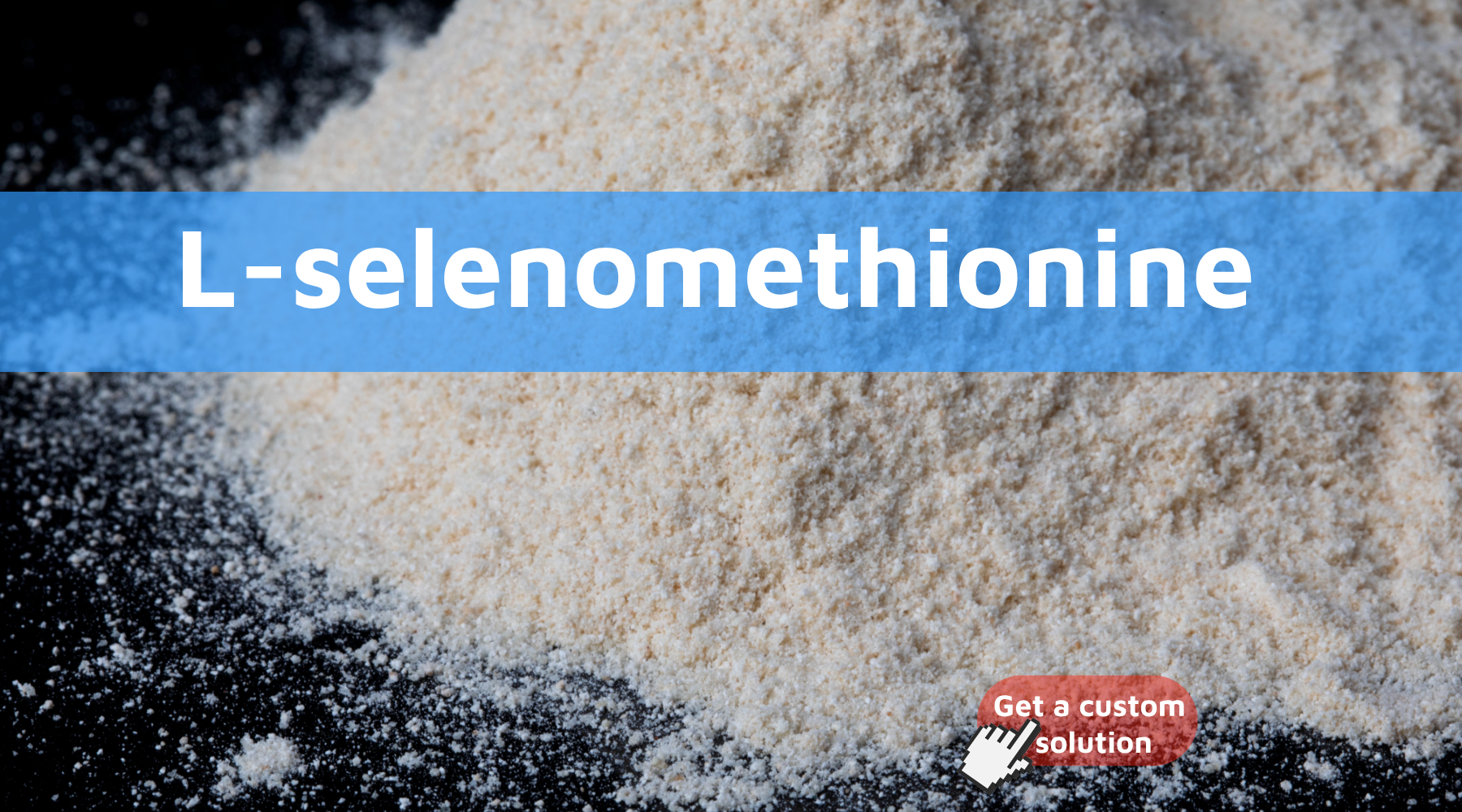L-selenomethionine 0.1% l-selenomethionine Powder feed Grade Organic Selenium Organic Selenium Animal feed additives 3211-76-5
As a leading enterprise in the production of animal trace elements in China, SUSTAR has received widespread recognition from customers both domestically and internationally for its high-quality products and efficient services. The L-selenomethionine produced by SUSTAR not only comes from superior raw materials but also undergoes more advanced production processes compared to other similar factories.
Product Efficacy
- No.1 Clear element, precise component while remaining cost effectiveL-selenomethionine is formed by chemical synthesis, unique component, high purity(more than 98%),whose selenium source 100% comes from L-selenomethionine.
- No.2 With a well-developed and consistent method (HPLC) for accurate qualification and quantification
- No.3 High deposition efficiency An efficient, stable and definite source of organic selenium providing animals with more effective selenium nutrition
- No.4 Improvement of reproductive performance of breeders and well-being of their offspring
- No.5 Improvement of livestock and poultry meat quality, darkening meat color and reduction of drip loss.
L-selenomethionine 0.1%, 1000 ppm,
· Target users: Suitable for end users, self-compounding facilities, and small-scale feed factories.
· Usage scenarios:
Can be directly added to complete feed or concentrated feed;
Used in farms with refined management, especially for breeding sows, growing broiler chickens, and seedlings in aquaculture.
· Advantages:
Safer, with low usage threshold;
Suitable for on-site use, manual batching, facilitating customers to control the dosage;
Reduces the risk of improper operation.
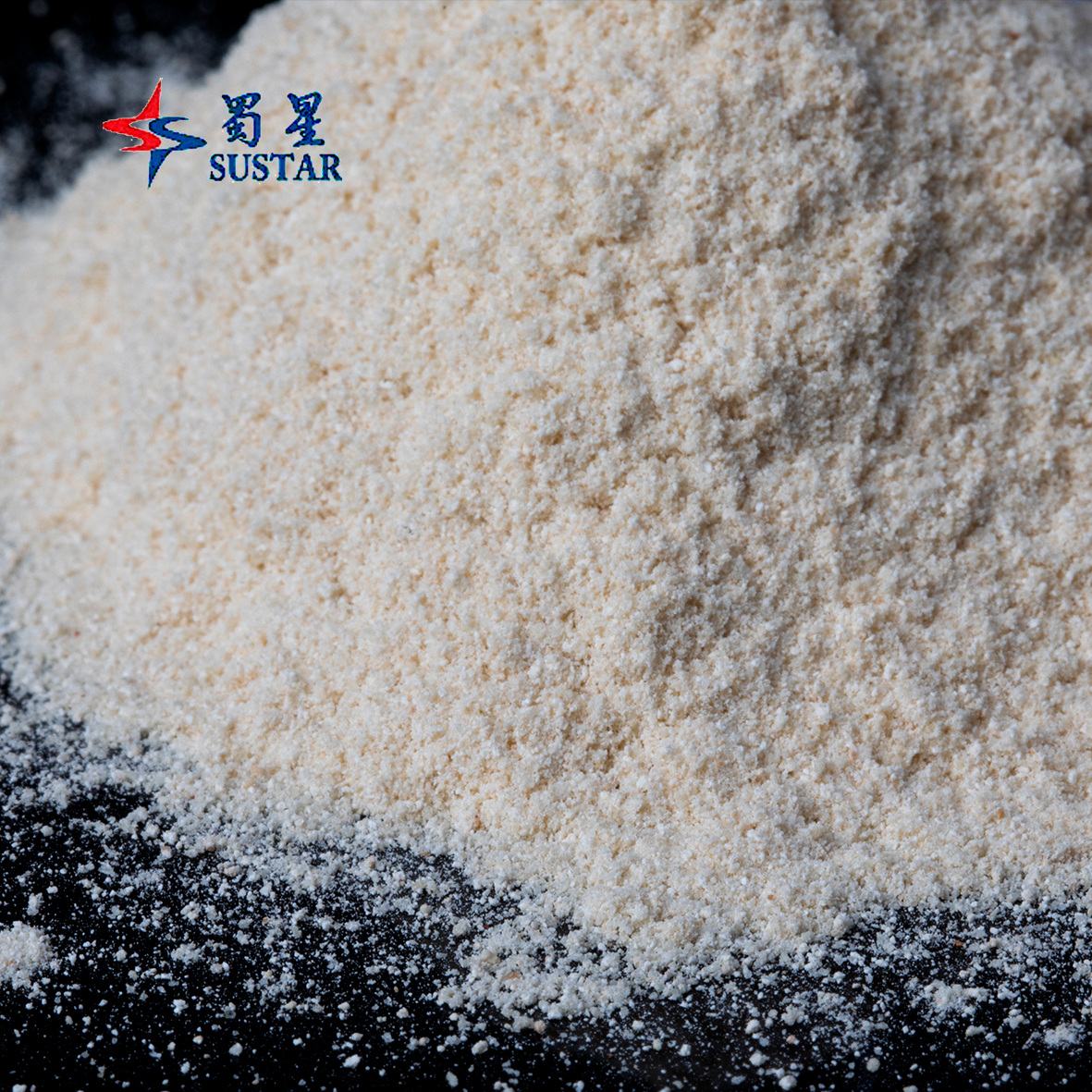
Indicator
Name: L-selenomethionine
Molecular formula: C5H11NO2Se
Molecular weight: 196.11
Se content: 0.1, 0.2, and 2%
Physical properties: Colorless transparent hexagonal flaky crystal, with metallic luster
Solubility: Soluble in water and alcohol organic solvents
Melting point: 267-269°C
Structural formula:
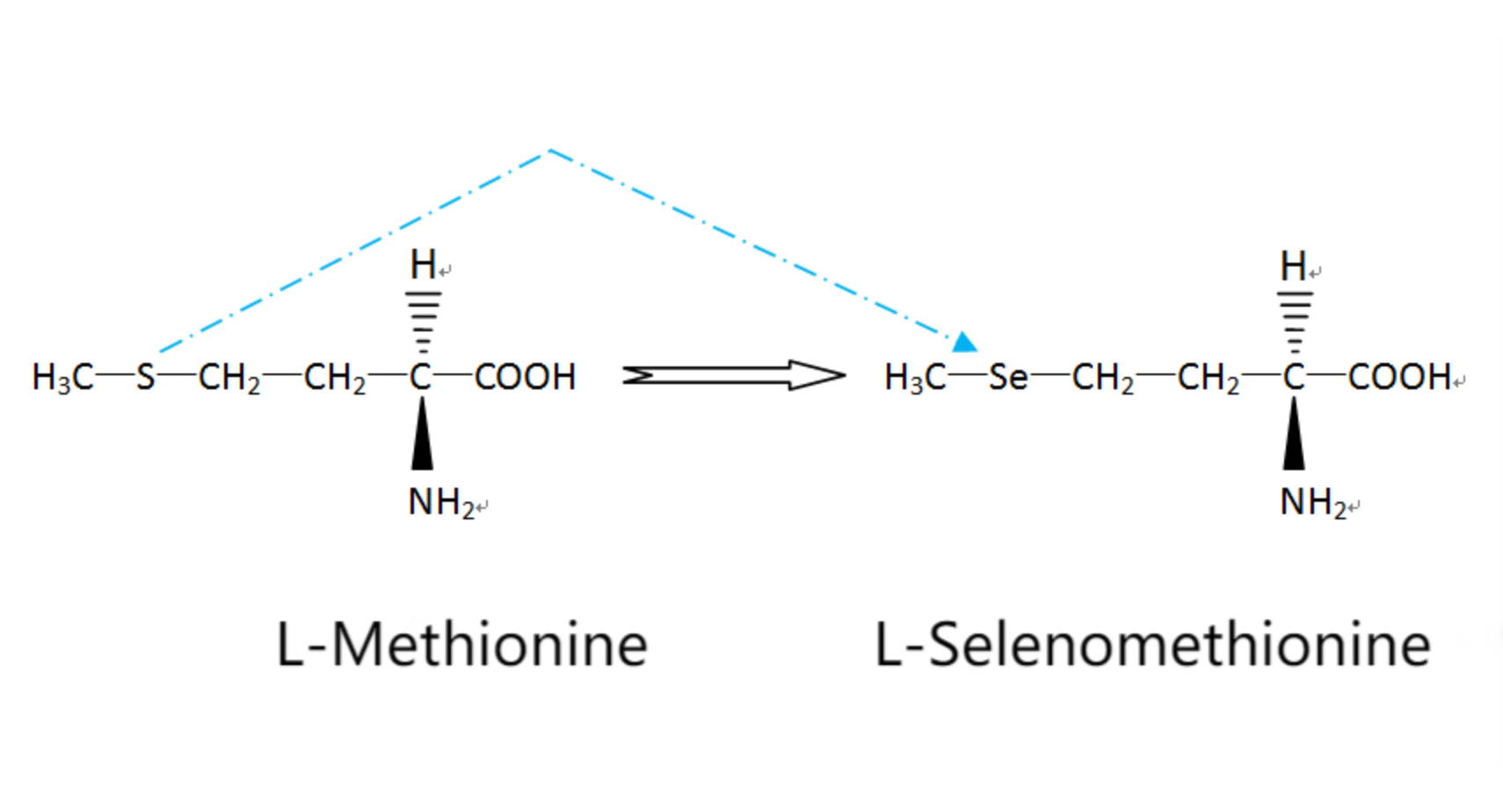
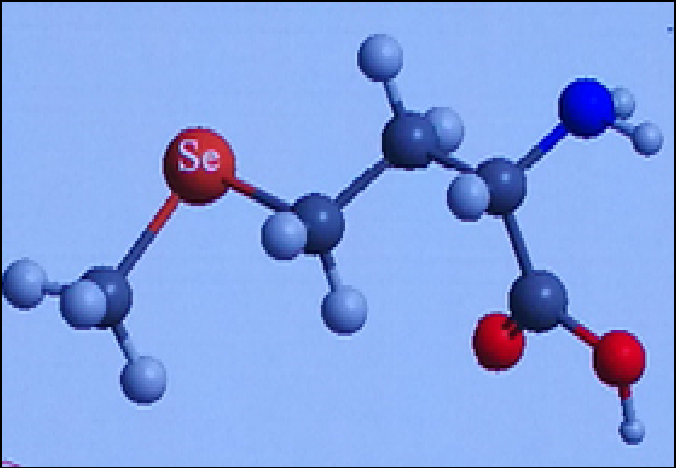
Physical and Chemical indicator:
| Item | Indicator | ||
| Ⅰtype | Ⅱ type | Ⅲ type | |
| C5H11NO2Se ,% ≥ | 0.25 | 0.5 | 5 |
| Se Content, % ≥ | 0.1 | 0.2 | 2 |
| As, mg / kg ≤ | 5 | ||
| Pb, mg / kg ≤ | 10 | ||
| Cd,mg/kg ≤ | 5 | ||
| Water content,% ≤ | 0.5 | ||
| Fineness (Passing rate W=420µm test sieve), % ≥ | 95 | ||
Physiological Functions of Selenium
Selenium is inserted into selenocysteine in the form of selenophosphate in the body, and then synthesized into selenoproteins, which exert biological functions through selenoprotein.
Selenium mainly exists in organisms in the form of selenocysteine and selenomethionine.

Selenium Deficiency
Cause diseases such as degeneration and necrosis of animal organs and tissues. The symptoms are as follows:
Hepatodystrophy in pigs
Mulberry heart disease in piglets
Encephalomalacia or exudative diathesis of chicken
Nutritional muscle degeneration of duck
Retention of the placenta of cattle and goat/sheep
White muscle disease of calf and lamb
Sawdust liver of cattle
Selenium Deficiency - Selenium from Three Different Sources
Selenite/Selenate
Selenite/Selenate
Mineral source
First licensed supplementation in 1979
Only prevent selenium deficiency
Low cost
0% Selenium is from selenomethionine
Selenium Yeast
Generation: Se-Yeast
Organic selenium source, produced by fermentation
Since 2006, there have been
many brands on the market, but their quality
varied significantly
Selenium methionine accounts for about 60%
60% Selenium is from selenomethionine
Synthetic Selenomethionine
Generation: OH-SeMet
Organic selenium source, chemical synthesis
Good consistency and stability
High bioavailability
Easy detection
Approved by the EU in 2013
99% Selenium is from selenomethionine
Advantages and Disadvantages of Different Selenium Sources

Differences and Similarities between Inorganic Se and Organic Se
Different Absorption Pathways and Different Bioavailability
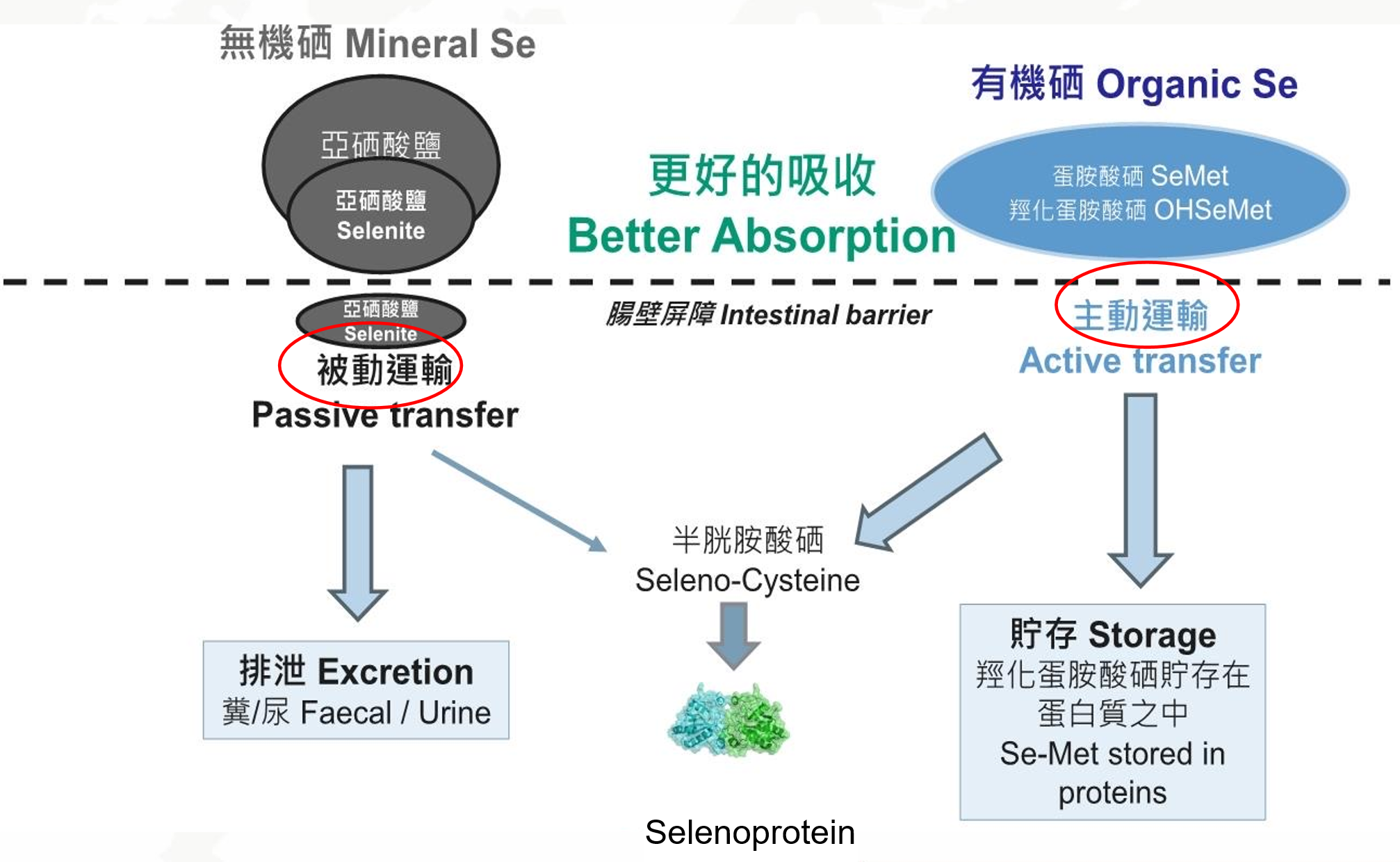
Advantages of Selenomethionine
High Bioavailability
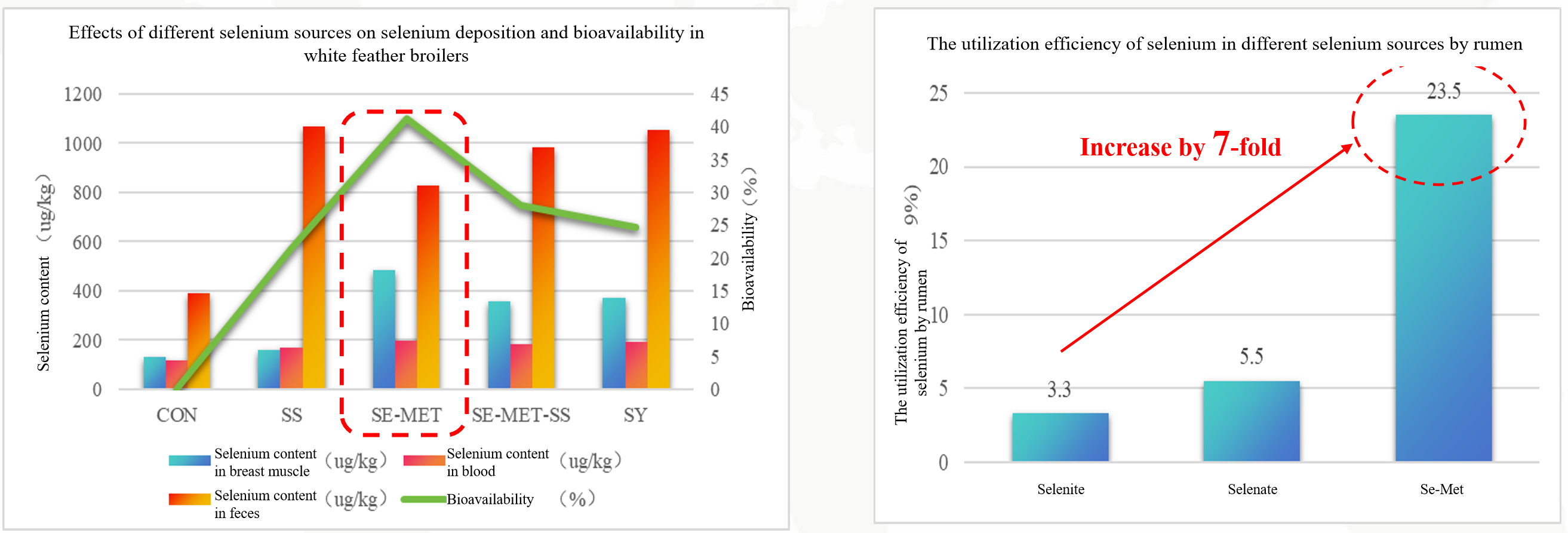
Stable Structure
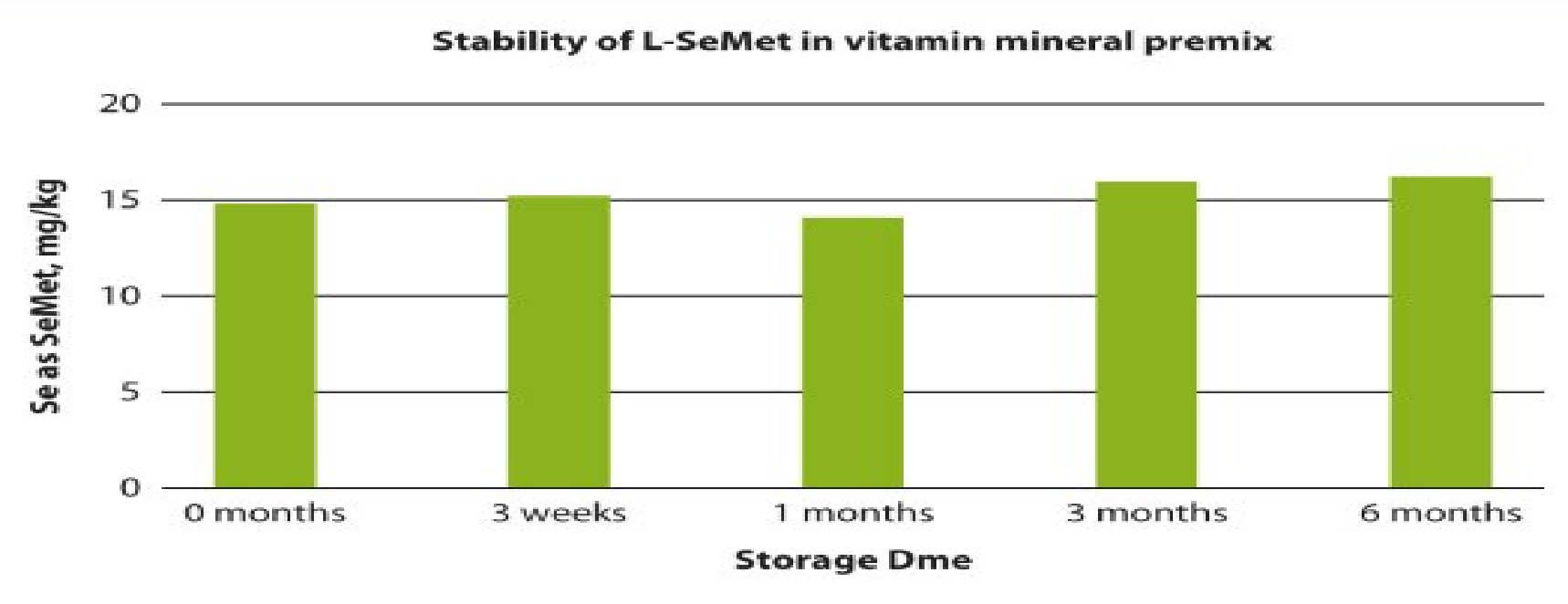
Stable Content
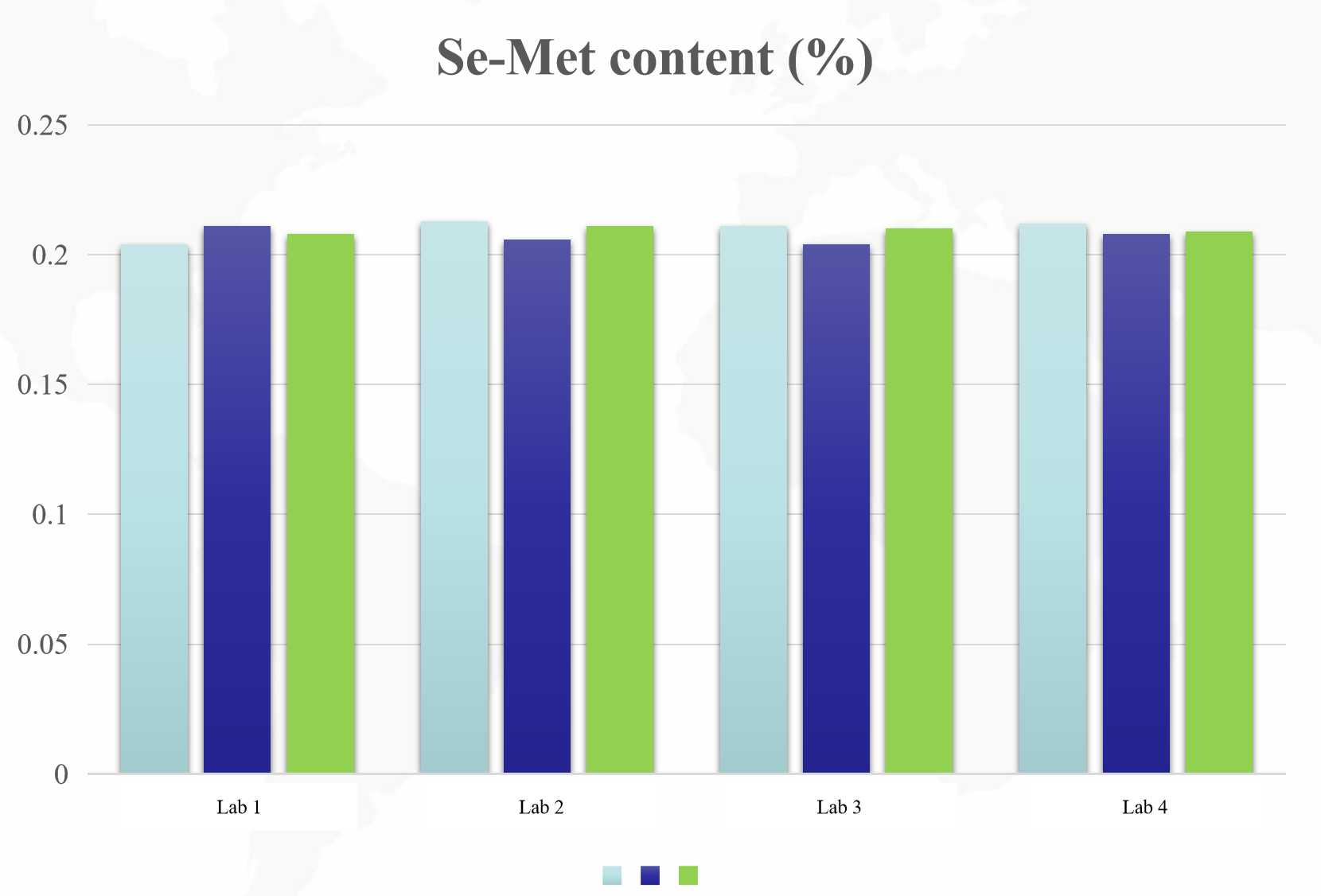
The same batch of samples with a selenium content of 0.2% were sent to third-party laboratories in Jiangsu, Guangzhou, and Sichuan for testing. (The standard solution is also in the same bottle)
Good Mixing Homogeneity
Better dispersivity
Better load property
Better mixing homogeneity
| Mixing time | Product name | |
| 4 min | Piglet S1011G | |
| Sample No. | Sample weight (g) | Se value (mg/kg) |
| 1 | 3.8175 | 341 |
| 2 | 3.8186 | 310 |
| 3 | 3.8226 | 351 |
| 4 | 3.8220 | 316 |
| 5 | 3.8218 | 358 |
| 6 | 3.8207 | 345 |
| 7 | 3.8268 | 373 |
| 8 | 3.8222 | 348 |
| 9 | 3.8238 | 349 |
| 10 | 3.8261 | 343 |
| STDEV | 18.48 | |
| Averge | 343 | |
| Coefficient of variation (CV%) | 5.38 | |
Application Effects of Selenomethionine
Improve the Growth Performance of Animals

Improve Antioxidant Capacity and Enhance Immunity

Supplementing different selenium sources can effectively increase the content of GSH-Px in serum, muscles and liver
Supplementing different selenium sources can effectively improve the content of T-AOC in serum and muscles
Supplementing different selenium sources can effectively reduce the content of MDA in muscles and liver
The effect of Se-Met is better than that of inorganic selenium sources
Reproductive Performance

Preproductive Performance - Dam
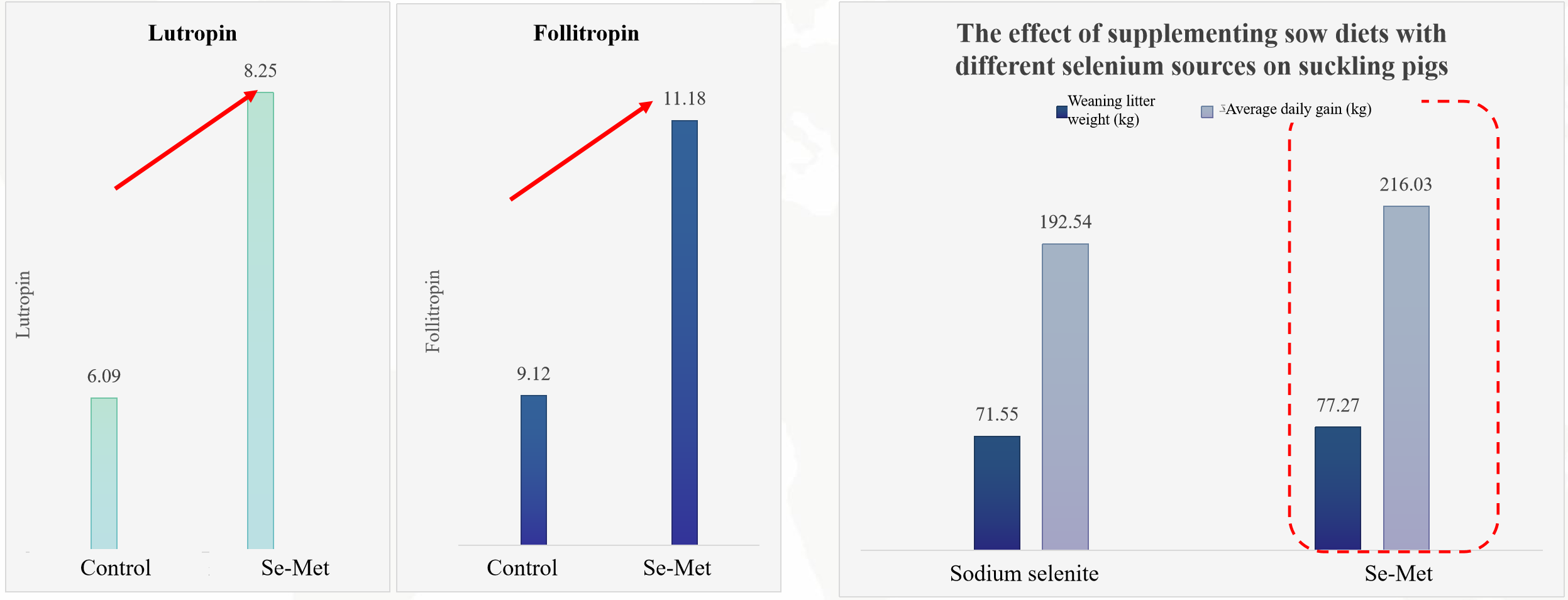
Supplementing an appropriate amount of Se-Met can not only promote the secretion of reproductive hormones in dams, but also increase the weaning litter weight and daily gain of young animals.
Improve Meat Quality
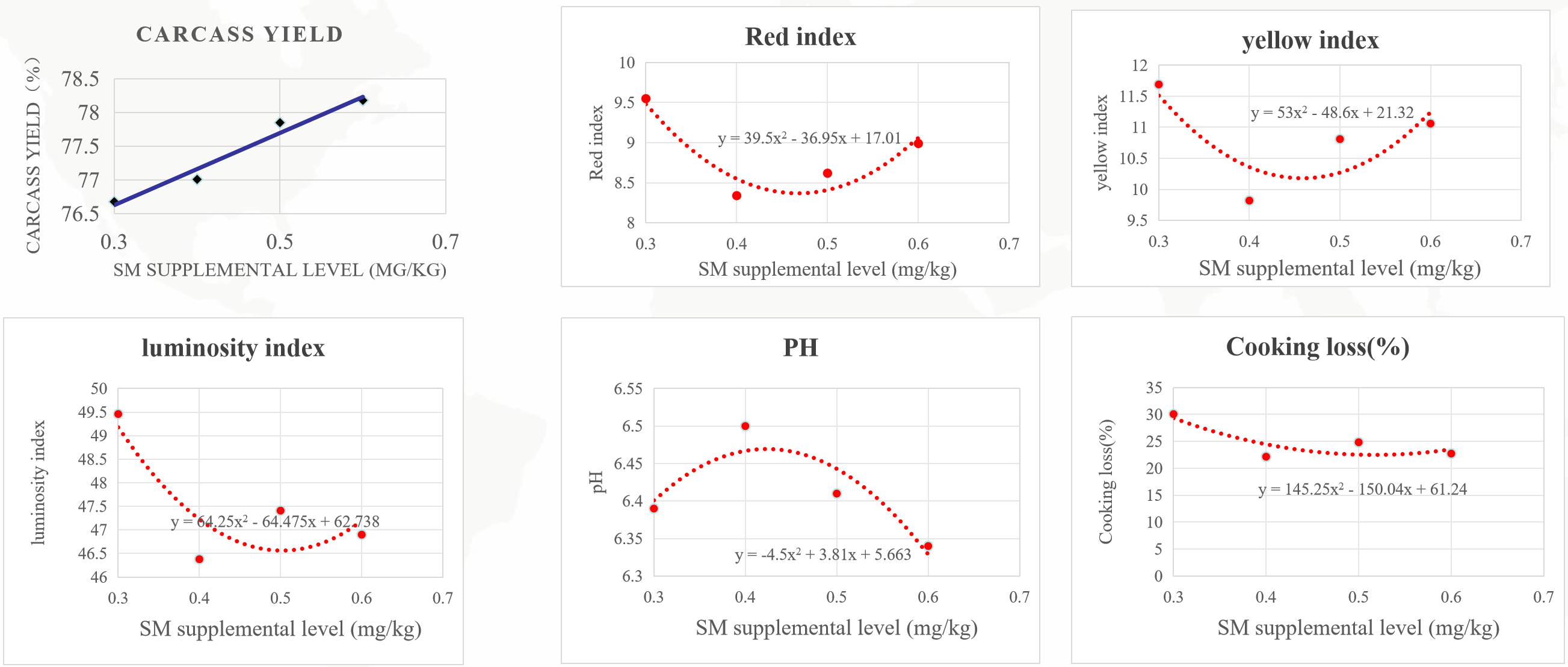
Supplementing the diet for growing-finishing pigs with0.3-0.7 mg/kg SM can improve meat color, reduce cooking loss, and increase meat pH and carcass yield, and 0.4 mg/kg is the optimal addition level.
Improve Selenium Deposition

Compared with sodium selenite and Se-yeast, dietary supplementation of Se-Met can increase the content of selenium in liver, kidneys and muscles, produce selenium-enriched meat, and reduce MDA in longissimus dorsi.
Egg Quality
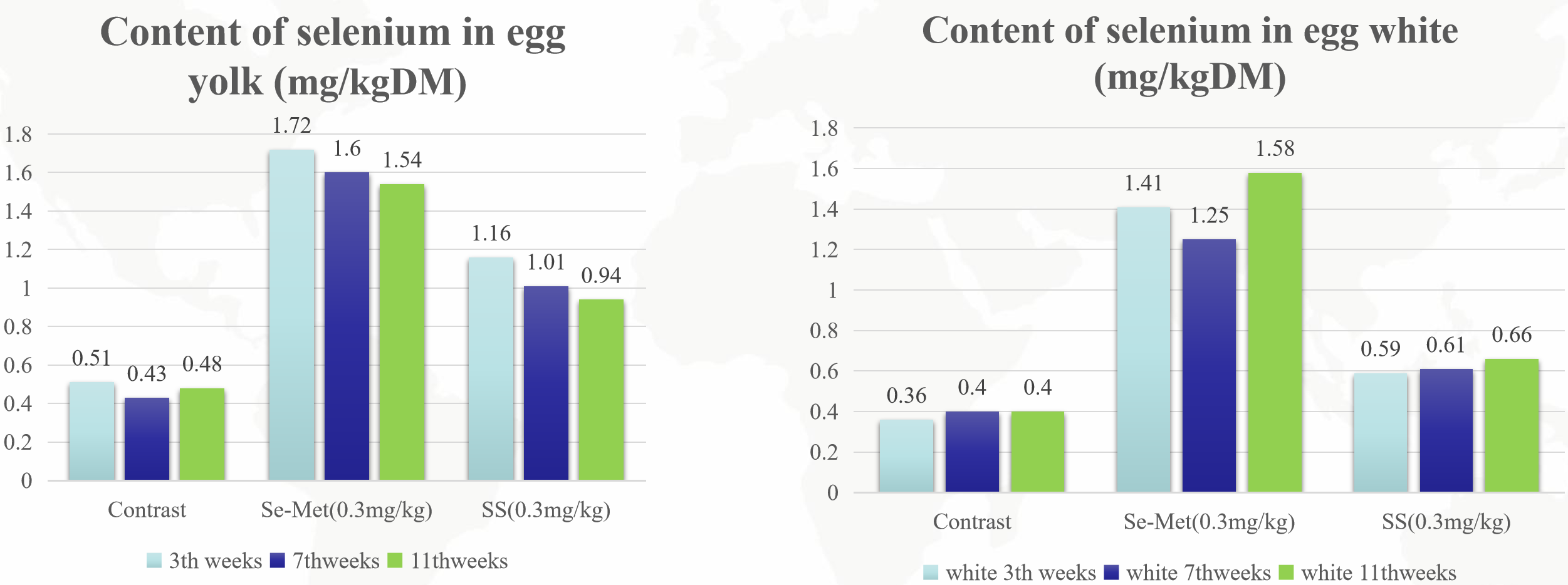
A total of 330 ISA brown layers were divided into three groups: control group, 0.3 mg/kg sodium selenite group, and 0.3 mg/kg Se-Met group. The content of selenium in eggs was analyzed. The results are as follows:
Milk Quality - Selenium Deposition
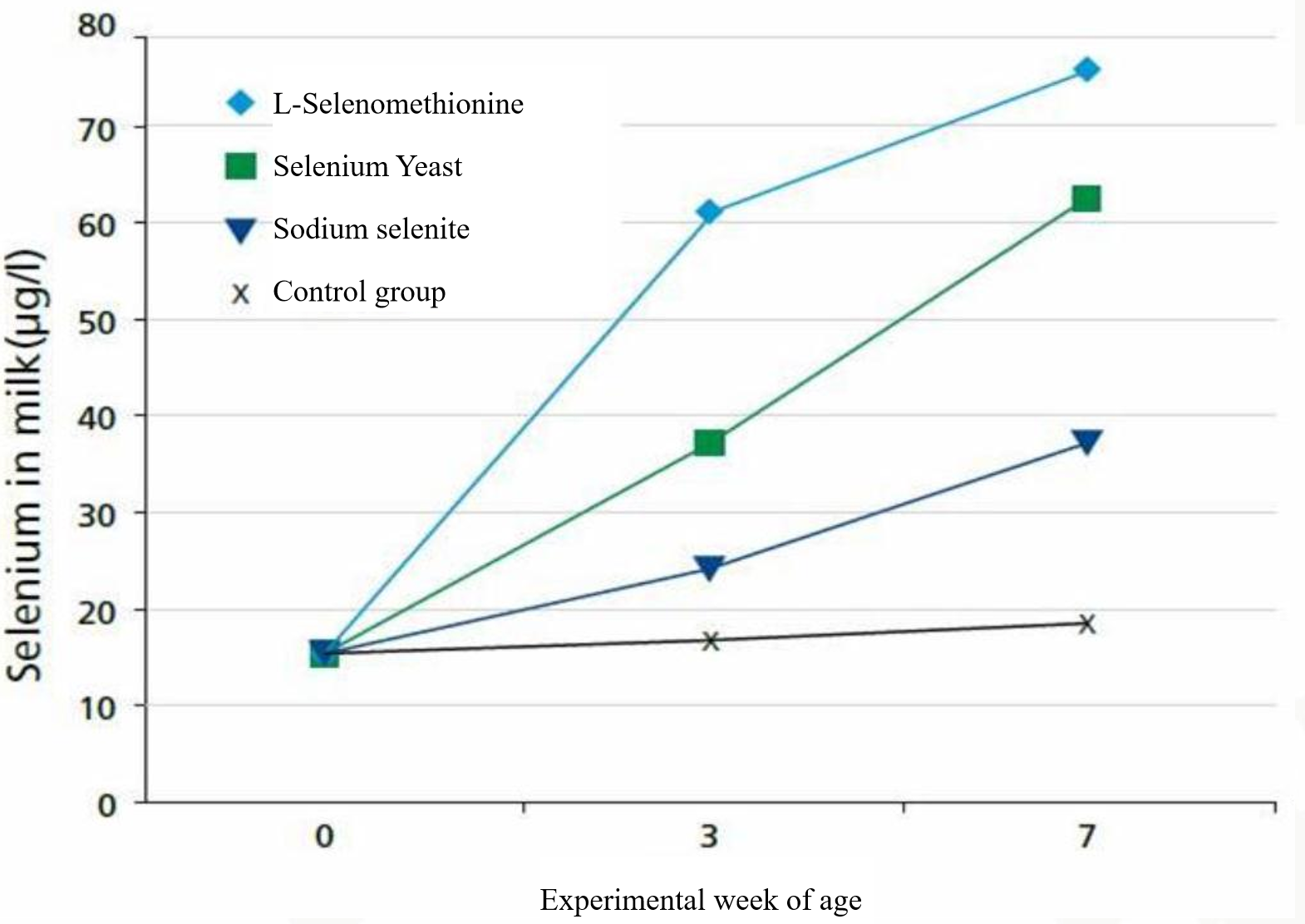
Se-Met can effectively pass through the breast barrier to form milk, and the selenium deposition efficiency in milk is significantly higher than that of sodium selenite and Se-yeast, which is 20-30% higher than that of Se-yeast.
Application Solutions of Sustar's Selenomethionine
Recommended application solutions (take 0.2% L-selenomethionine, for example)
1. Supplementing 60 g/t L-selenomethionine to replace 100 g/t Se-yeast directly;
2. If the total inorganic selenium in the diet is 0.3 ppm: inorganic selenium 0.1 ppm + L-selenomethionine 0.1 ppm (50 g);
3. If the total inorganic selenium in the diet is 0.3 ppm: L-selenomethionine 0.15 ppm (75 g) is completely substituted;
4. Produce selenium-enriched products:
Basal inorganic selenium 0.1-0.2 ppm + L-selenomethionine 0.2 ppm (100 g) can make the selenium content in meat and eggs reach 0.3-0.5 ppm, forming a selenium-enriched food;
Supplementing L-selenomethionine 0.2 ppm (100 g) alone can meet the requirements of selenium-enriched meat and egg food (≥0.3 ppm).
The livestock and poultry formula feed or aquafeed can be supplemented with 0.2-0.4 mg/kg (based on Se); the formula feed can also be directly supplemented with 200-400 g/t of this product with a content of 0.1%; 100-200 g/t of this product with a content of 0.2%; and 10-20 g/t of this product with a content of 2%.
Top Choice of International Grop
Sustar group has decades-long partnership with CP Group, Cargill, DSM, ADM,Deheus ,Nutreco,New Hope ,Haid,Tongwei and some other TOP 100 big feed company.

Our Superiority


A Reliable Partner
Research and development capabilities
Integrating the talents of the team to build Lanzhi Institute of Biology
In order to promote and influence the development of livestock industry at home and abroad, Xuzhou Animal Nutrition Institute , Tongshan District Government, Sichuan Agricultural University and Jiangsu Sustar, the four sides established Xuzhou Lianzhi Biotechnology Research Institute in December 2019.
Professor Yu Bing of Animal Nutrition Research Institute of Sichuan Agricultural University served as the dean, Professor Zheng Ping and Professor Tong Gaogao served as the deputy dean. Many professors of Animal Nutrition Research Institute of Sichuan Agricultural University helped the expert team to accelerate the transformation of scientific and technological achievements in the animal husbandry industry and promote the development of the industry.


As a member of the National Technical Committee for Standardization of Feed Industry and the winner of China Standard Innovation Contribution Award, Sustar has participated in drafting or revising 13 national or industrial product standards and 1 method standard since 1997.
Sustar has passed the ISO9001 and ISO22000 system certification FAMI-QS product certification, obtained 2 invention patents, 13 utility model patents, accepted 60 patents, and passed the "Standardization of intellectual property management system", and was recognized as a national-level new high-tech enterprise.

Our premixed feed production line and drying equipment are in the leading position in the industry. Sustar has high performance liquid chromatograph, atomic absorption spectrophotometer, ultraviolet and visible spectrophotometer, atomic fluorescence spectrophotometer and other major testing instruments, complete and advanced configuration.
We has more than 30 animal nutritionists, animal veterinarians, chemical analysts, equipment engineers and senior professionals in feed processing, research and development, laboratory testing, to provide customers with a full range of services from formula development, product production, inspection, testing, product program integration and application and so on.
Quality inspection
We provide test reports for each batch of our products, such as heavy metals and microbial residues. Each batch of dioxins and PCBS complies with EU standards. To ensure safety and compliance.
Assist customers to complete the regulatory compliance of feed additives in different countries, such as the registration and filing in the EU, USA, South America, Middle East and other markets.

Production Capacity

Main product production capacity
Copper sulfate-15,000 tons/year
TBCC -6,000 tons/year
TBZC -6,000 tons/year
Potassium chloride -7,000 tons/year
Glycine chelate series -7,000 tons/year
Small peptide chelate series-3,000 tons/year
Manganese sulfate -20,000 tons /year
Ferrous sulfate-20,000 tons/year
Zinc sulfate -20,000 tons/year
Premix (Vitamin/Minerals)-60,000 tons/year
More than 35 years history with five factory
Sustar group has five factories in China ,with annual capacity up to 200,000 tonns, covering totally 34,473 square meters,220 employees.And we’re an FAMI-QS/ISO/GMP certified company .
Customized Services

Customize Purity Level
Our company has a number of products have a wide variety of purity levels, especially to support our customers to do customized services, according to your needs. For example, our product DMPT is available in 98%, 80%, and 40% purity options; Chromium picolinate can be provided with Cr 2%-12%; and L-selenomethionine can be provided with Se 0.4%-5%.

Custom Packaging
According to your design requirements, you can customize the logo, size, shape, and pattern of the outer packaging
No one-size-fits-all formula? We tailor it for you!
We are well aware that there are differences in raw materials, farming patterns and management levels in different regions. Our technical service team can provide you with one to one formula customization service.


Success Case

Positive Review

Various Exhibitions we Attend









